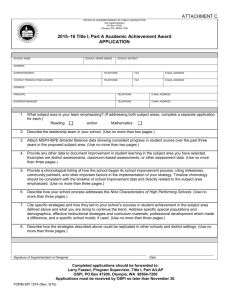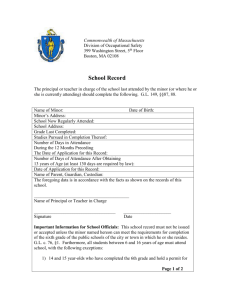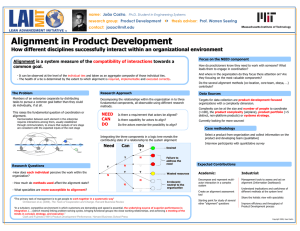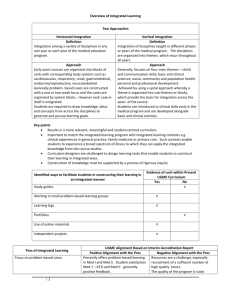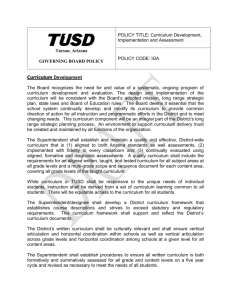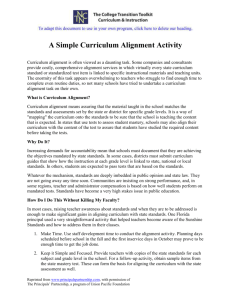Pre-AP – AP Vertical Alignment TSSSA 2011
advertisement
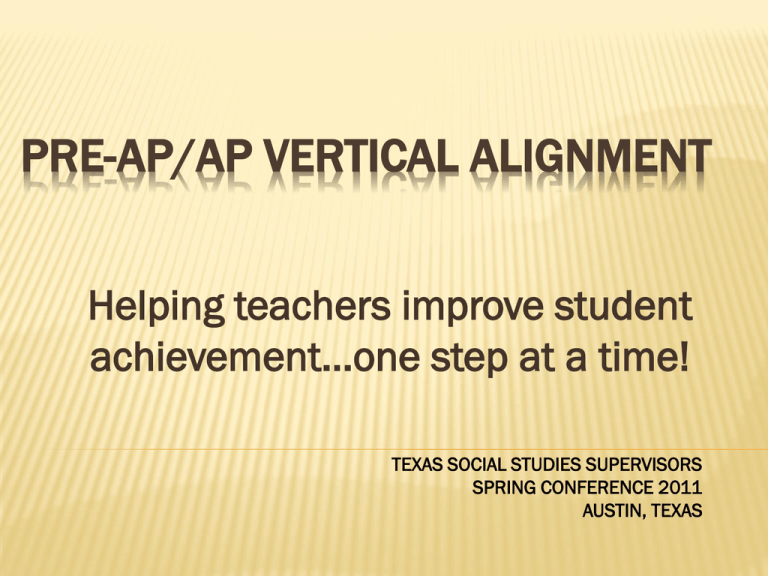
PRE-AP/AP VERTICAL ALIGNMENT Helping teachers improve student achievement…one step at a time! TEXAS SOCIAL STUDIES SUPERVISORS SPRING CONFERENCE 2011 AUSTIN, TEXAS PRESENTERS Angela Miller Secondary Social Studies Curriculum Manager amiller2@houstonisd.org Montra Rogers Secondary Social Studies Content Specialist mrogersw@houstonisd.org PRE AP/AP VERTICAL ALIGNMENT The concept of vertical alignment incorporates the idea that AP courses cannot be taught in isolation…it requires cooperation of teachers working together to coordinate their teaching efforts in a continuum of skill building from one grade/course to the next. STUDENT ACHIEVEMENT The academic intensity of a student’s high school curriculum still counts more than anything else in pre-collegiate history in providing momentum toward completing a bachelor’s degree. THE TOOLBOX REVISITED: Paths to Degree Completion From High School Through College Clifford Adelman, U.S. Department of Education, 2006 THINK/PAIR/SHARE What skills do students need to be successful in high school AP Social Studies courses? RATIONALE FOR OUR WORK Social Studies was not part of Laying the Foundation In Spring 2010, there were only 3 high schools out of the 36 in the district with more than 50% of the students achieving 3, 4, or 5s on the AP World History and/or the APUSH exams. In Spring 2010, the Superintendent stated his expectation that EVERY student enrolled in any AP course would sit for the exams [and the district helped pay for those exams]. MORE REASONS… The Superintendent expects every high school to offer 12 - 15 AP courses by 2011 – 2012 and that each student will graduate with AP courses on his/her transcript. Through suggestion from the Superintendent all high schools in the district began offering AP Human Geography as a 9th grade replacement course for World Geography Studies this year. Beginning next year, 50% of each teacher’s appraisal will be based on student achievement data including AP exam scores. TEACHING SKILLS AND STRATEGIES AWARE AWKWARD ABLE TO APPLY AUTOMATIC WHAT IS TAUGHT MATTERS! Students rise to the level of rigor in the curriculum and the assignments given them…with systematic instructional supports. www.edtrust.org HABITS OF THE MIND Read the article Habits of the Mind: A Conversation with Grant Wiggins Use the Dialectical Journal strategy to reflect on your reading Share with partners. QUALITIES OF VERTICAL ALIGNMENT SUCCESSFUL SOCIAL STUDIES STRATEGIES… FOUR CORNERS CATEGORIZATION Teachers identified strategies they felt were critical to student success. We identified the four categories of critical skills currently used by College Board: 1. 2. 3. 4. INQUIRY SKILLS INTERPRETATION SKILLS [PRIMARY/SECONDARY] ANALYSIS SKILLS APPLICATION AND PRESENTATION SKILLS Analyze the picture of two dolphins [below] for similarities and differences – The more differences you see the more you are experiencing stress… REASONS TO TEACH WRITING Writing is a fundamental skill Social studies contains a myriad of possibly engaging content ideas to write about Writing helps students become better thinkers The ability to clearly express ones ideas connects learning to the real world connection Students who can write are REALLY college and career ready! INTELLECTUAL DIARY/QUICK WRITES 3 – 5 minutes with prompt your pen must keep moving. If you don’t know what to write put “My mind just went blank” or “I will think of something in a minute.” Do NOT stop and correct ANYTHING A GOOD WRITING PROMPT… Forces students to “take a stand” or make an assertion Defend their position with relevant, specific and accurate information Explain why their information supports their assertion Most advanced…destroy counter arguments… HANG IN THERE!!!

